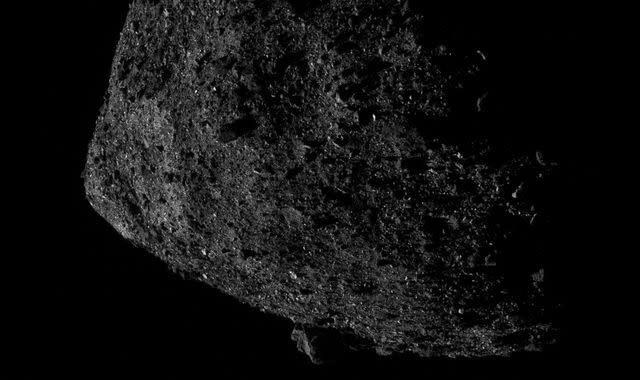NASA mission to return with 'pristine' samples from asteroid 'which could one day hit Earth'

A NASA mission is due to land in the US with "pristine" samples from an asteroid which scientists warned could one day hit Earth.
The OSIRIS-REx spacecraft gathered rocks and dust from the Bennu asteroid's surface in 2020.
The spacecraft was launched in 2016 as part of NASA's first mission to collect samples from an asteroid.
It will land with the sample in the Utah desert on Sunday.
NASA has said the "pristine material from Bennu" will offer generations of scientists a window into the time when the sun and planets were forming about 4.5 billion years ago.
Bennu, which was discovered by NASA in 1999, is thought to have been around within the first 10 million years of our solar system's formation.
It has a diameter of around 490m (1,600ft), weighs 85.5 million tonnes, and is covered in boulders of rock.
The OSIRIS-REx spacecraft briefly touched the surface of Bennu and collected a sample before propelling off the asteroid in October 2020.
Could Bennu ever hit Earth?
Bennu passes near Earth every six years and has had three close encounters with the planet in 1999, 2005, and 2011, NASA has said.
In 2021, scientists with the OSIRIS-REx team said the asteroid could possibly drift into the Earth's orbit and hit the planet by September 2182.
Read more:
Closest-ever photo of massive asteroid Bennu
NASA taking 'concrete action' to explore UFOs
There is a 1 in 2,700, or 0.037% chance that Bennu could hit Earth in that year, scientists said.
The asteroid would release 1,200 megatons of energy, around 24 times the energy of the most powerful nuclear weapon ever built, if it hit the Earth, according to IFLScience.
However, this is substantially less than the six-mile wide asteroid which killed the dinosaurs - which scientists said in 2019 was as powerful as 10 billion atomic bombs.

 Yahoo News
Yahoo News 
